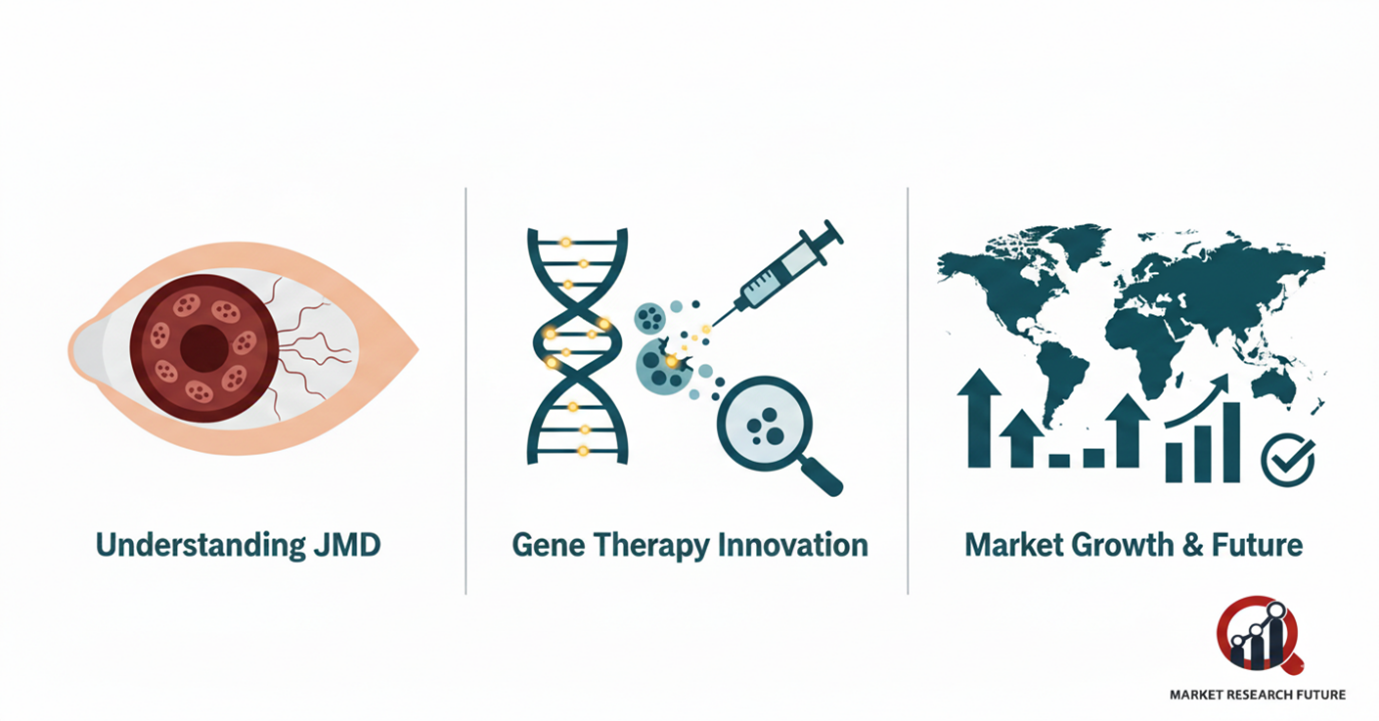
Overview: Inherited Retinal Disorders Gain Global Attention
Recent studies conducted by Moore & Achenbach (2023) document juvenile macular degeneration (JMD) and its sub-illnesses, Best disease, Stargardt disease, and juvenile Retinoschisis as a principal focus within ophthalmology. Though JMD is rare, the macular degeneration-related disorders primarily affect children and young adults. Progressive and severe loss of central vision occurs most commonly within the first two decades of life.
Stargardt's disease, the most common form of JMD, develops between the ages of 6 and 20, and symptoms are sometimes not recognized until the 30s. It targets both genders and is equally distributed.
Increased awareness and JMD diagnosis have led to a multitude of investments in the soon-to-be market of JMD treatment. Focus is on cutting-edge gene therapy, regenerative therapy, and targeted precision diagnostics in order to improve the future of treatment for retinas that inherited disorders.
Current Landscape: Vision Loss Innovations
Although there are no FDA-approved medications for treating Stargardt, gene and stem cell therapy, as well as visual aids, are being developed.
New adaptive technologies, like smart magnifiers, voice-activated devices, AI-vision tools, and even smart devices, are allowing patients to experience a better quality of life while also fostering their independence.
Pharmaceutical and biotech companies are improving their research and development to meet the urgent need for therapies that modify Stargardt.
Emerging Treatment Options: Leading with Gene and Stem Cell Therapies
As Stargardt is a genetically inherited disorder involving the ABCA4 gene, gene therapy is a logical treatment option.
Oxford BioMedica’s LentiVector® platform is pioneering StarGen, a groundbreaking gene therapy that aims to replace defective ABCA4 with normal copies of the gene, offering hope for long-term vision preservation.
Retroactive Research and Development on Astellas-supported Advanced Cell Technology’s FDA-approved Phase I/II stem cell trial on Stargardt's Macular Dystrophy is a cornerstone for regenerative ophthalmology.
Acucela Inc.'s Emixustat and Lin BioScience's LBS-008 are two promising drugs to slow or halt the progression of the disease.
Though treatment remains costly, the next few years promise improved therapy efficacy and affordability, thanks to advances in cell therapy, CRISPR gene customizations, and neuroprotective medicines.
Market Leading Players: Progress from Partnerships and Collaborations
The Juvenile Macular Degeneration market is characterized by the expansion of strategic collaboration, market acquisitions, and partnerships between the development of orphan drugs for JMD and the expansion of the global JMD ophthalmic portfolio.
Astellas Pharma has solidified its market position through the growth of its retinal therapy pipeline and the acquisition of Ocata Therapeutics, and the development of ASP7317 and ASP8232.
Carl Zeiss AG, the world's largest optics and optoelectronics company, is contributing to the early diagnosis of juvenile macular degeneration and the awareness of treatment. With the 2017 acquisition of Veracity Innovations, LLC, Zeiss enlarged its digital ophthalmology portfolio in the EMEA region.
Acucela Inc. received the orphan drug designation for Emixustat in 2017, further solidifying the company's place in the evolution of Stargardt disease and the Ophthalmology pipeline.
The strategic and innovative partnerships are aiding the commercialization of the global market for JMD.
The global burden of Stargardt disease, estimated to be 70,000 globally and 32,000 to 41,000 in the United States, necessitates more vigorous policy subsidization and funding assignment in retinal research and treatment.
Challenges and Opportunities: The Road Ahead
The JMD market has technological opportunities but also faces challenges, such as:
- Scant approved treatments and no marketed cure
- Expensive gene and stem cell therapy
- Delayed treatment because of complex diagnosis and disease heterogeneity
These challenges will bring clinical trials, AI retinal scanning, and patient registries to address early treatment and customized therapy in the next 10 years.
Conclusion: A Positive Outlook for Tomorrow
The Juvenile Macular Degeneration market is waiting for great changes. With the progress of gene therapy, stem cell research, and regenerative ophthalmology, patients have great reasons for optimism.
The market is expected to see great developments due to the strategic collaborations between industry leaders, researchers, and regulatory bodies, especially with the global race to deliver the first FDA-approved therapy for Stargardt disease. The future of the market for JMD will not just be about cutting-edge innovations and advancements, but about a higher purpose: the vision of care for patients. These cared-for patients deserve to have their sight restored, and the market for JMD care deserves to deliver quality, life-changing care and redefine the future of care for sight.